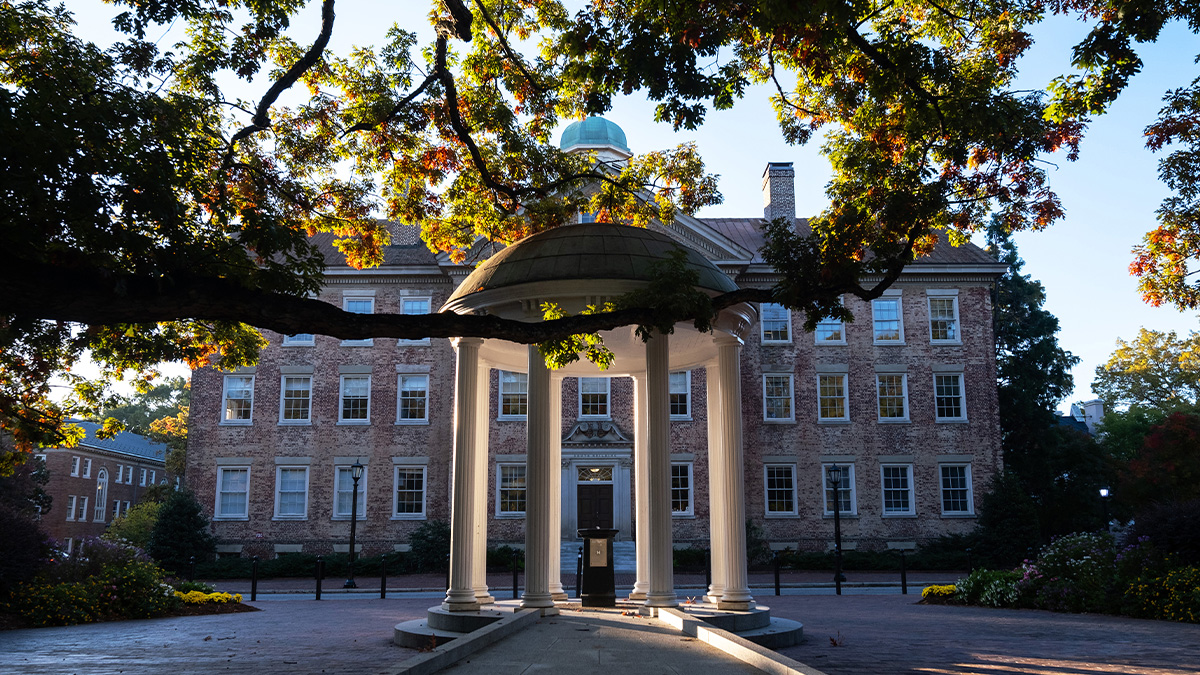Faculty research funding increases to $777.8 million, up nearly $11 million

Carolina’s Genome Sciences Building has an entire floor of rooftop greenhouses to support plant-genomics research.
Faculty at the University of North Carolina at Chapel Hill secured $777.8 million in research funding during fiscal 2013. That total is up nearly $11 million – 1.4 percent – from $767.1 million the previous year.
The funding comes in contracts and grants awarded by federal and state agencies, foundations, nonprofit organizations, corporations and associations.
“These results are a remarkable tribute to the work our faculty are doing to improve people’s lives, to make sure North Carolina is a global research and development leader, and to make the world a better place,” said Chancellor Carol Folt, who briefed the University’s Board of Trustees today.
“With a difficult economy and continued funding cuts in many of the federal agencies, a number of universities are losing ground in their research funding,” she said. “Carolina is bucking the national trends, and our state and region are benefitting as a result.”
One factor in this year’s success, Folt said, was diversifying funding sources and bringing in more dollars from foundations and private industry and business. “This is a healthy trend, and one we hope will continue.”
Folt emphasized the importance of the historic commitment of the N.C. General Assembly, taxpayers and the University to making wise investments in new research facilities and infrastructure such as the Carolina Physical Science Complex and the Genome Sciences Building dedicated last fall. Such innovative facilities have made possible ground-breaking interdisciplinary scientific research, which has had a direct and positive impact on bringing in research dollars, she said.
“These investments will continue to pay huge dividends for the University and for the people of North Carolina, supporting thousands of jobs, leveraging the state’s investment, and providing economic and other benefits to communities across the state,” Folt said.
Folt praised the efforts of Vice Chancellor for Research Barbara Entwisle, her colleagues and deans and academic leaders across the campus for providing excellent support that allows faculty researchers to thrive.
The National Institutes of Health (NIH) remained the University’s largest funding source, providing $366.9 million, or 66.9 percent of federal research dollars. NIH’s strong and ongoing support reflects the extraordinary reputation of our health-related professional schools (dentistry, medicine, nursing, pharmacy and public health), UNC Health Care and its teaching hospitals, and basic and social science units in the College of Arts and Sciences.
The University’s other top funders were the U.S. Agency for International Development, $49.7 million (9.1 percent); National Science Foundation, $39.3 million (7.2 percent); and U.S. Department of Health and Human Services, $38.1 million (7 percent).
The University’s multidisciplinary research centers and institutes continue to play a growing role in bringing research funding to North Carolina, accounting for roughly $160 million of total awards in 2013. These centers and institutes attract close to $7.70 in external funds for each $1 of state funds invested.

Examples of research programs funded by fiscal 2013 federal grants include:
- A School of Medicine clinical trial made it possible for a multidisciplinary medical team to place an auditory brain stem implant in a deaf 3-year-old Charlotte boy, allowing him to hear his father’s voice for the first time. The YouTube video created by UNC Health Care has been viewed by more than 2 million people around the world.
- Energy and Environment at Carolina, part of the Institute for the Environment, represents a campus-wide partnership producing interdisciplinary research, education and outreach in all aspects of energy use, environmental quality and economic development. The work is supported by Duke Energy Progress.
- The Carolina Population Center’s National Longitudinal Study of Adolescent Health follows a nationally representative sample of U.S. adolescents who were in grades 7-12 in 1994-95. The goal is to understand how adolescent and early adulthood experiences, behaviors and social contexts influence well-being in young adulthood. The center uses an integrative approach combining social, behavioral and biomedical sciences.
- A grant from the Andrew W. Mellon Foundation has served as a catalyst to create the Carolina Digital Humanities Initiative, a $5 million effort exploring the application of advanced digital technologies to humanities research, teaching and knowledge creation. It embraces a variety of topics, from curating online collections to mining large data sets. The initiative will build on the work of the Digital Innovation Lab, in the College of Arts and Sciences, co-directed by Robert Allen, James Logan Godfrey Professor of American Studies, and Richard Marciano, professor in the School of Information and Library Science.
- A recent study led by nutrition faculty at the Gillings School of Global Public Health found that foods rich in specific amino and fatty acids helped youngsters with Type 1 diabetes keep producing some of their own insulin for up to two years after diagnosis. The study involved more than 1,300 participants in a multi-center research program that is the largest study of childhood diabetes in the U.S. The diet additions did not reduce the need for supplemental insulin, but may help reduce future disease complications.
- Carolina researchers are helping North Carolina better prepare for hurricanes and tropical storms through advanced computing technology and collaboration with local and state emergency managers. The Advanced Circulation Model Surge Guidance System, developed through UNC’s Institute of Marine Sciences in Morehead City and the Department of Homeland Security-funded Coastal Hazards Center, provides coastal communities with detailed data about storm surge, wave heights and the potential for flooding. Researchers at UNC’s Renaissance Computing Institute (RENCI) use supercomputing capabilities to create high-resolution models; the results are shared with emergency managers in coastal communities to help local leaders make informed decisions related to road closings, evacuations, and search and rescue.




